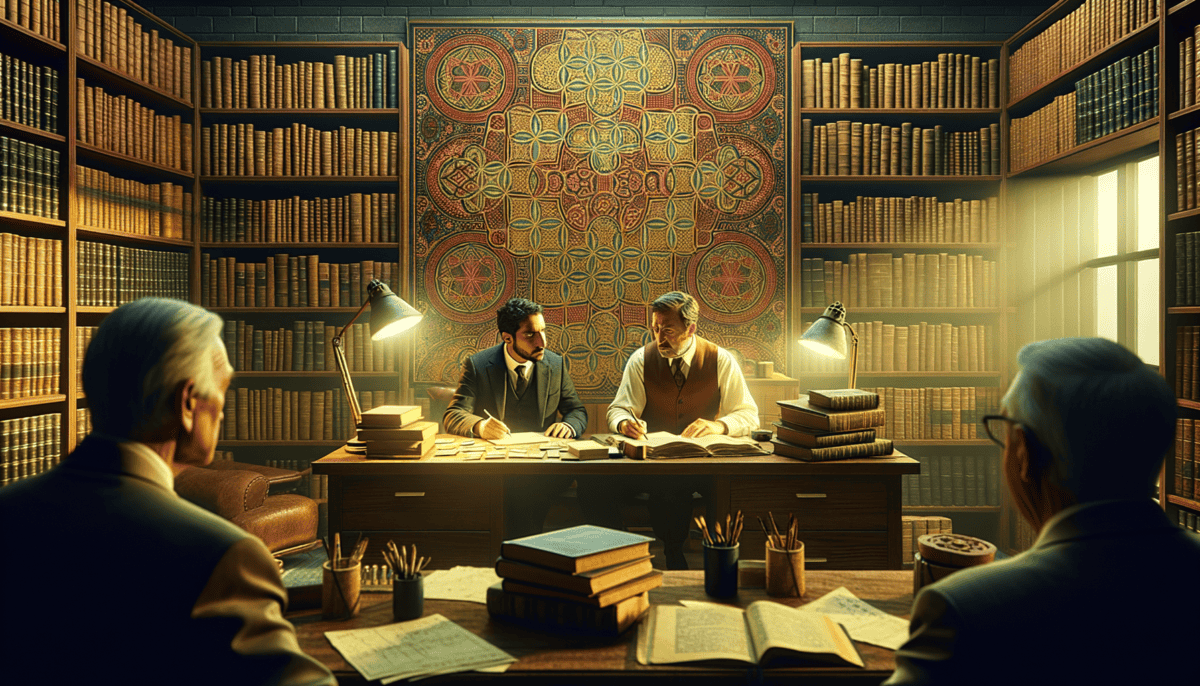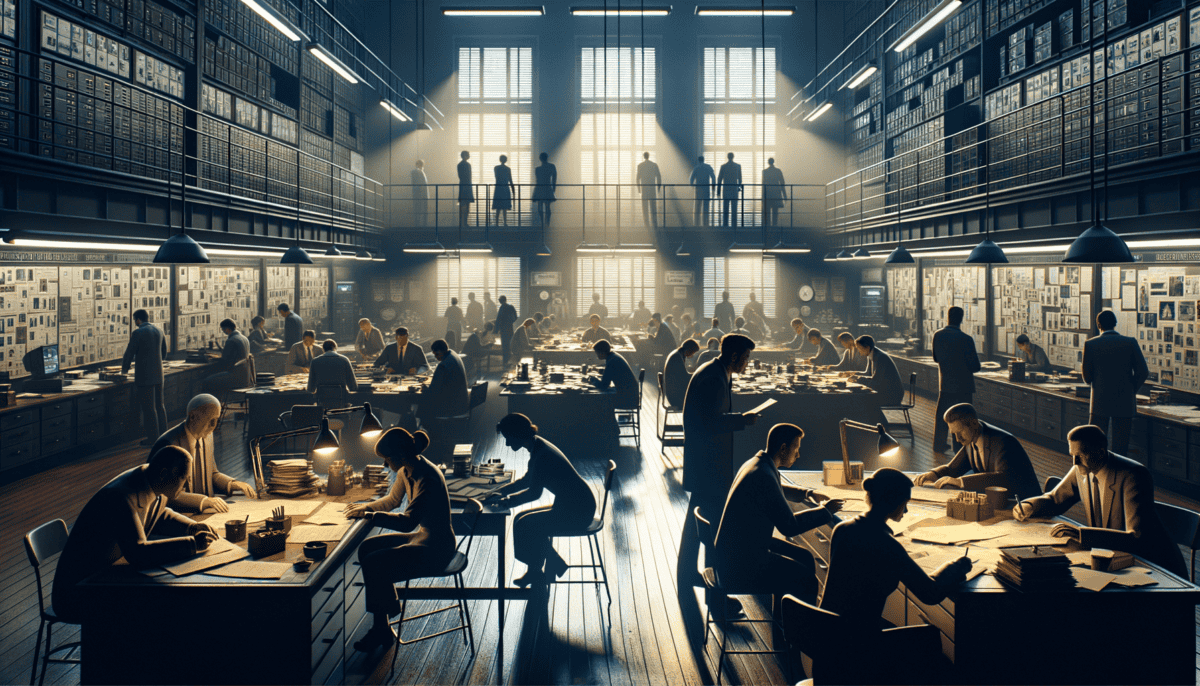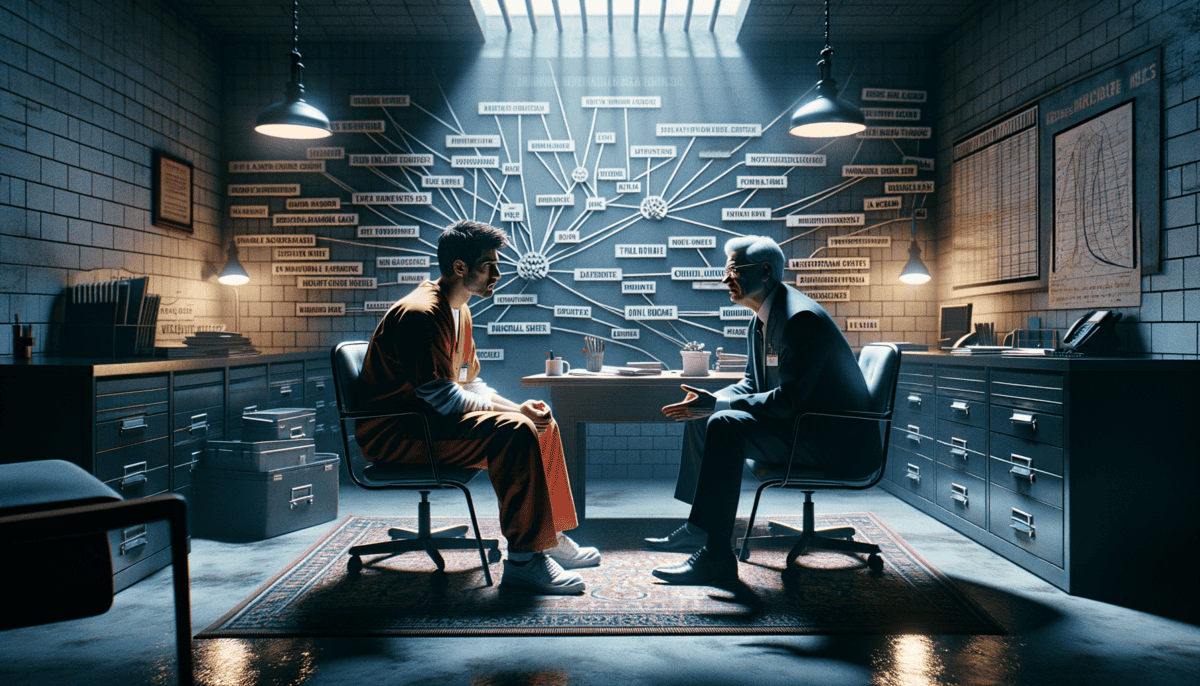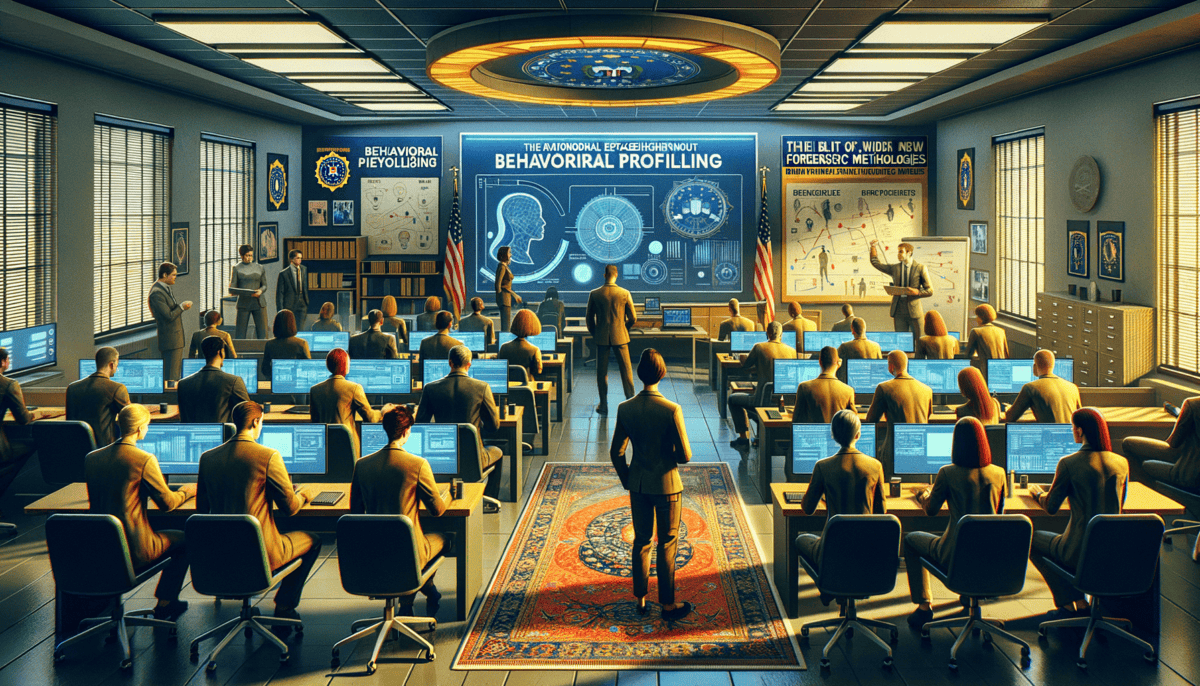The Darkness Emerging
The streets of America had changed. Special Agent Jack Douglas felt it in his bones as he walked into FBI headquarters on a cold morning in 1972. The usual buzz of phones and typewriters filled the air, but today felt different.
"Another one," his colleague Tom said, dropping a thick file on Jack's desk. "Third case this month. No leads, no patterns, nothing that makes sense."
Jack picked up the file, his coffee growing cold beside him. The photos inside made his stomach turn. Something was different about these crimes – they weren't just robberies gone wrong or crimes of passion. They were calculated, precise, and deeply disturbing.
The traditional ways weren't working anymore. Jack had seen it over and over – detectives looking for the usual clues: fingerprints, weapons, witness statements. But these new criminals left them stumped. They were dealing with a different kind of darkness.
"What if," Jack said, standing up suddenly, "we're asking the wrong questions? What if instead of asking where they went or what they did, we should be asking why they did it?"
Tom looked up from his desk, confused. "Why does that matter? A crime is a crime."
A New Kind of Criminal
Jack walked to the window, watching agents come and go in the parking lot below. The world was changing fast. The crimes they were seeing were getting stranger and more violent. The old methods weren't enough anymore.
Here's what made these new criminals different:
• They didn't know their victims
• They planned their crimes carefully
• They often struck more than once
• They seemed to enjoy hurting people
• They were hard to catch using normal police work
"These people aren't just criminals," Jack explained to his team later that day. "They're something else. They have reasons for what they do, even if those reasons only make sense to them."
Some of his fellow agents laughed. Others shook their heads. Nobody believed him yet.
But Jack knew he was onto something. He started keeping notes about each strange case that came across his desk. He looked for patterns not in the evidence, but in the way these criminals thought and acted.
“To catch these monsters,” he wrote in his journal that night, “we need to understand how their minds work. We need to learn to think like them – without becoming them.”
The First Steps
Jack started visiting prisons, talking to the worst criminals he could find. He asked them questions nobody had asked before:
- What were you thinking when you did it?
- How did you choose your victims?
- What made you start?
- How did it make you feel?
The answers were shocking, but they started to make sense in a terrible way. Each criminal had their own twisted logic, their own way of seeing the world. Understanding that logic might be the key to catching them.
Late one night, as Jack was leaving the office, Tom caught up with him in the parking lot.
"Maybe you're right," Tom admitted. "Maybe we do need to try something new. These cases… they're getting worse."
Jack nodded, unlocking his car. "We need to get inside their heads," he said. "It's the only way we'll stop them."
The streetlights cast long shadows across the parking lot as Jack drove home. He knew he was at the beginning of something important – and something dangerous. Understanding the darkest corners of the human mind wouldn't be easy.
But if it could help catch these new kinds of criminals, it would be worth it.
The journey to understanding criminal minds had begun, even if most people didn't know it yet. Jack Douglas was about to change the way we catch criminals forever.
The Birth of the Behavioral Science Unit
Special Agent John Douglas sat in a dimly lit office at Quantico. The year was 1974, and his dream was finally becoming real. The FBI had agreed to try something new – a special team that would study criminal minds.
"Welcome to the Behavioral Science Unit," he said to Robert Ressler, his new partner. The two men looked around their small office, filled with boxes of case files.
A Bold New Plan
John and Robert had a simple but scary idea – they would talk to the worst criminals in prison. They wanted to learn how these bad people thought. Many FBI agents didn't like this plan.
"You can't just go chat with killers!" yelled Agent Thompson during a meeting. "They're dangerous!"
"That's exactly why we need to understand them," John replied calmly. "To stop more people from getting hurt."
"If we know how they think, we can catch them faster," Robert added. "We might even stop them before they hurt someone else."
The First Interviews
Their first prison visit was scary. The guards led them to a small room where they would meet Edmund Kemper, a very dangerous man. John's hands were sweaty, but he tried not to show his fear.
Edmund was huge – almost seven feet tall! But he spoke softly and answered all their questions. He told them things that helped them understand why he did bad things.
Day after day, John and Robert visited more prisoners. They wrote down everything they learned. Soon, they started to see patterns in how these criminals thought and acted.
Making a New Kind of Detective Work
They called their new method "criminal profiling." It was like being a detective who looks for clues about how someone thinks instead of just fingerprints.
Here's what they looked for:
- How the criminal picked their victims
- What made them angry or scared
- Where they came from
- How they grew up
- What they did before hurting people
Some police officers didn't believe in this new way. "This isn't real police work," they said. But John and Robert kept going. They knew they were onto something important.
"We're building something new here," John told Robert one late night as they worked on their files. "Something that will help catch the worst criminals."
Robert nodded, looking at the wall of photos and notes they'd collected. "And maybe," he added, "we'll save some lives too."
The little office in Quantico was just the beginning. The Behavioral Science Unit would grow bigger than anyone expected. They were learning things about criminals that nobody had ever known before.
Each interview, each case file, and each new discovery brought them closer to understanding how to catch the scariest criminals. The future of solving crimes was changing right before their eyes.
The First Big Success
The morning sun peeked through the blinds as Special Agent John Douglas stared at a new case file. A scary man was hurting people in Seattle, and the police needed help.
“This is our chance,” John told Robert. “We can show everyone that our new way works.”
A Scary Case
The Seattle police were stuck. Four women had gone missing. They didn’t know who was doing it or why. They called the Behavioral Science Unit for help.
John and Robert used what they learned from talking to bad people in jail. They started to build a picture of who might be doing these scary things.
Making the First Profile
They sat in their office for three days straight. They looked at pictures, read reports, and thought about everything they knew about how bad people think.
“This person is different from the others we’ve studied,” Robert said, pinning another note to their board.
Finally, they had their first real criminal profile. Here’s what they told the police to look for:
- A man who seems nice but lives alone
- Someone who drives a van or truck
- A person who knows the area very well
- Someone who had a hard time growing up
- A man who seems friendly but gets angry easily
The Big Test
The Seattle police weren’t sure about this new idea. “How can you know all this without seeing him?” they asked.
The man worked as a delivery driver and knew all the streets. He seemed nice to everyone, but he had a dark secret. Just like the profile said!
The Hard Part of the Job
Success felt good, but the work was hard. John and Robert had scary dreams sometimes. Understanding bad people’s minds was scary work.
“How do you handle it?” a young agent asked John one day.
“I remember why we do this,” John answered. “To protect good people from bad ones.”
More People Start to Believe
After Seattle, more police departments wanted help. The phone in their office rang every day. Their small team started to grow.
“Remember when everyone thought we were crazy?” Robert laughed one day.
“Now they think we’re miracle workers,” John smiled. “That’s almost worse!”
Their success in Seattle changed everything. Other FBI agents started to believe in their work. Even the ones who didn’t like their ideas before started to listen.
Every new case taught them more. They got better at understanding how bad people think. They helped catch more criminals and save more lives.
The Behavioral Science Unit was growing stronger. But the hardest cases were still ahead. And the dark minds they studied would test them in ways they never expected.
Inside Dark Minds
Agent John Douglas sat in a cold prison room. Across the table sat Ted, one of the scariest criminals he had ever met. John needed to understand how Ted’s mind worked.
“Tell me about your childhood, Ted,” John said calmly. “What made you who you are?”
Talking to Bad People
The FBI team visited many prisons. They talked to people who did very bad things. It was scary, but they had to learn how these people thought.
Some criminals liked to brag. Others tried to trick the agents. But John and Robert got better at seeing the truth.
Making a Map of Bad Minds
After hundreds of talks, patterns started to show up. The team found that bad people often:
- Had trouble making friends when young
- Hurt animals before hurting people
- Told lots of lies
- Wanted to feel powerful
- Had very sad or angry childhoods
The Heavy Weight
Learning about dark things was hard on the team. Sometimes they couldn’t sleep. The stories they heard were very sad.
“How do you not let it change you?” a new agent asked John.
“We remember the people we’re trying to help,” John said. “That keeps us strong.”
New Ways to Help
The team used what they learned to make better profiles. They could now tell police:
– What kind of job the bad person might have
– Where they might live
– How they pick their victims
– What they might do next
Each success helped save more lives. But some cases still kept them up at night.
Finding Balance
“You can’t let the darkness in,” Robert told his team. “We look at it, we study it, but we don’t let it become part of us.”
Some days were harder than others. But their work was making a difference. Police departments started solving cases they couldn’t solve before.
A New Understanding
“We’re not just catching bad guys anymore,” John told his team one day. “We’re learning how to stop them before they hurt people.”
Their work was changing how police caught criminals. But more importantly, it was helping protect people from getting hurt.
The team kept working, kept learning, and kept fighting the darkness. They knew there would always be more to learn about the human mind – both its light and dark sides.
As they walked out of another prison interview, Robert turned to John. “Ready for the next one?” he asked.
“Always,” John replied. “Someone out there needs our help.”
A New Way to Fight Crime
The FBI’s Behavioral Science Unit was growing bigger. More and more police stations wanted to learn about criminal profiling.
“We need to teach others what we’ve learned,” John Douglas told his team. “It’s time to share our knowledge.”
Teaching Others
The FBI started special classes at Quantico. Police officers from all over America came to learn. They wanted to know how to catch bad guys using these new ways.
Making It Better
The team worked with scientists too. They wanted to make their methods even better. They learned about:
- DNA testing
- Crime scene photos
- Computer programs
- Witness memory
- Criminal patterns
Helping More Cases
The team started helping with all kinds of cases, not just the scariest ones. They helped find:
House breakers
People who steal money
Missing persons
“Every criminal leaves behind clues about who they are,” John taught. “We just have to learn to read them.”
Big Changes
Police stations started making their own profiling teams. They used what the FBI taught them to solve cases faster.
– Every big case needs a profile
– Teams must work together
– Always look for patterns
– Keep learning new things
Making History
One day, a young officer asked John, “How did you know this would work?”
“We didn’t,” John smiled. “We just knew we had to try something new to catch the bad guys.”
Looking Forward
The team kept making their methods better. They wrote books and made training videos. They wanted everyone to learn these new skills.
Police officers who learned these new ways solved cases faster. They understood criminals better. They could stop more bad things from happening.
Growing Bigger
The FBI team that started with just a few people now had hundreds of students. They were teaching police all over the world.
“Remember,” John would tell each new class, “this isn’t just about catching bad guys. It’s about making the world safer for everyone.”
As more success stories came in, the team knew they had created something special. But there was still more work to do, more criminals to catch, and more people to protect.
“Ready for tomorrow’s class?” Robert asked John one evening.
“Always,” John smiled. “We’re training the future of law enforcement.”
Making the World Safer
The sun was setting at Quantico. John Douglas looked out his office window, thinking about how far they’d come.
“Twenty years ago, we were just a small team with big dreams,” he said softly. “Now look at us.”
Success Stories
The walls of the FBI building were covered with thank you letters. Police from all over wrote about how profiling helped them catch bad guys.
Your methods helped us solve a case that was stuck for years. Thank you for teaching us!
– Detective Smith, Chicago Police”
Looking Back
Robert Ressler sat with John, looking through old case files. They remembered their first days:
Their first interviews with criminals
Writing their first profiles
Their first big success
Teaching the World
Now, police from other countries came to learn. The team’s ideas spread everywhere:
- Canada wanted their help
- England made their own team
- Australia started classes
- Japan learned the methods
- Many more joined in
Making Things Better
The team kept working on new ways to catch criminals. They used computers and science to make their work even better.
– Special computer programs
– Better ways to talk to witnesses
– New ways to study crime scenes
– More training for police
The Big Change
“Remember when people said we were crazy?” Robert laughed. “Now they say we changed police work forever.”
John nodded. “We did it by believing in our ideas and never giving up.”
The Future Looks Bright
Young FBI agents were excited to join the team. They wanted to learn everything about profiling.
“You’re the future now,” John told them. “Keep making these ideas better. Keep helping people.”
A Special Moment
On their last day before retiring, John and Robert walked through the FBI building one more time. ♂️
“We did good, didn’t we?” Robert asked.
“We sure did,” John smiled. “But the best part is knowing others will keep doing this work.”
The Story Goes On
Today, new agents carry on their work. They use the same ideas but with newer tools. They still believe what John and Robert taught them:
– Every clue tells a story
– Never stop learning
– Work together to help people
– Keep making the world safer
The FBI’s Behavioral Science Unit showed that understanding how bad guys think helps catch them. Their ideas changed police work forever and made the world a better place.
As the sun set on their last day, John and Robert knew their work would live on through all the people they taught. The future was bright, and the world was safer because of what they started.






